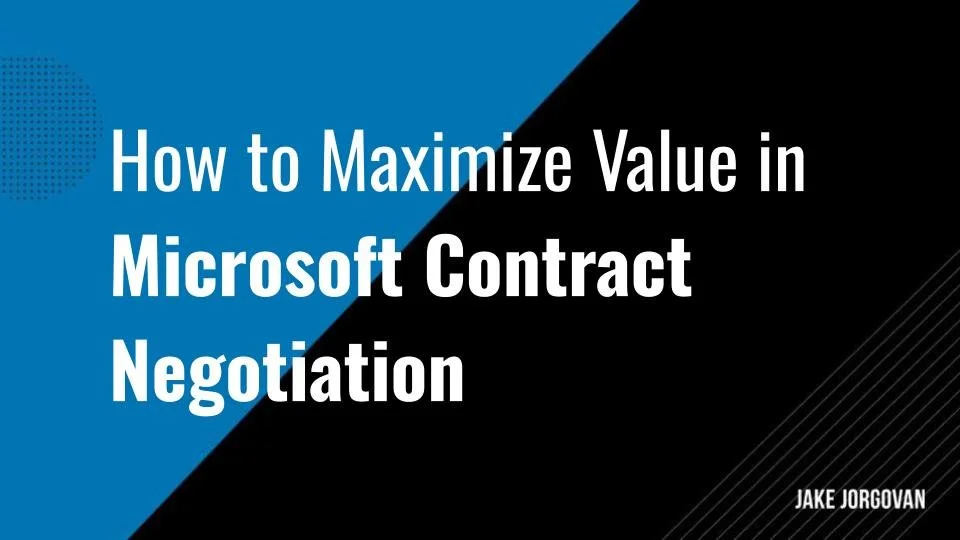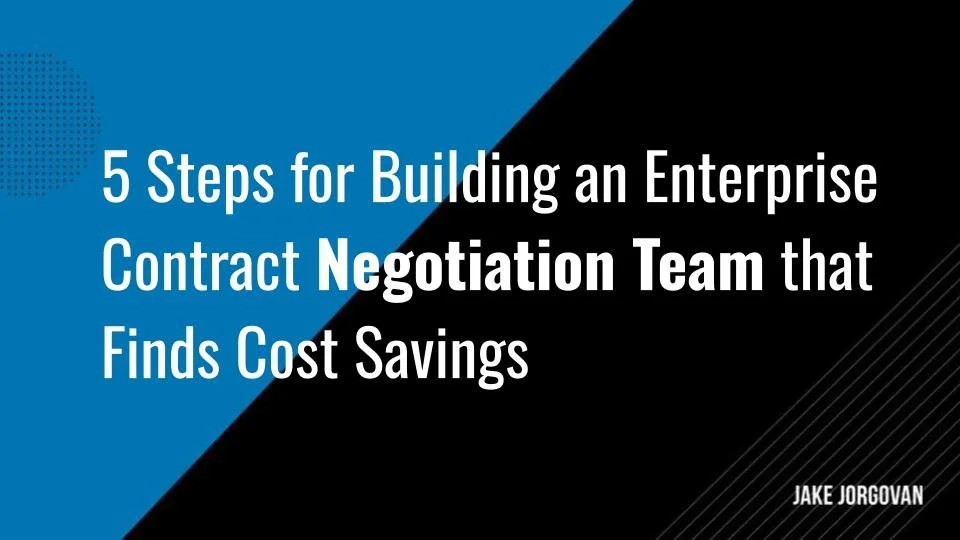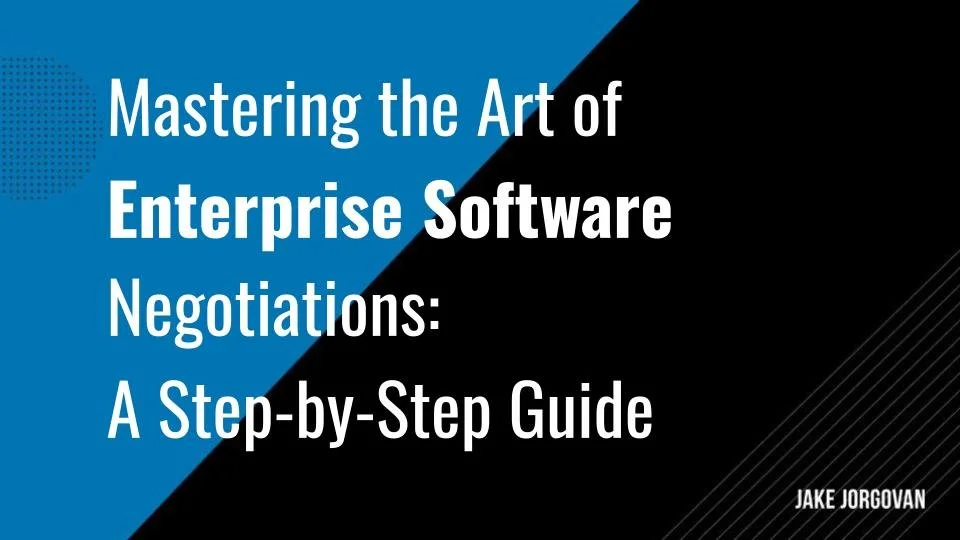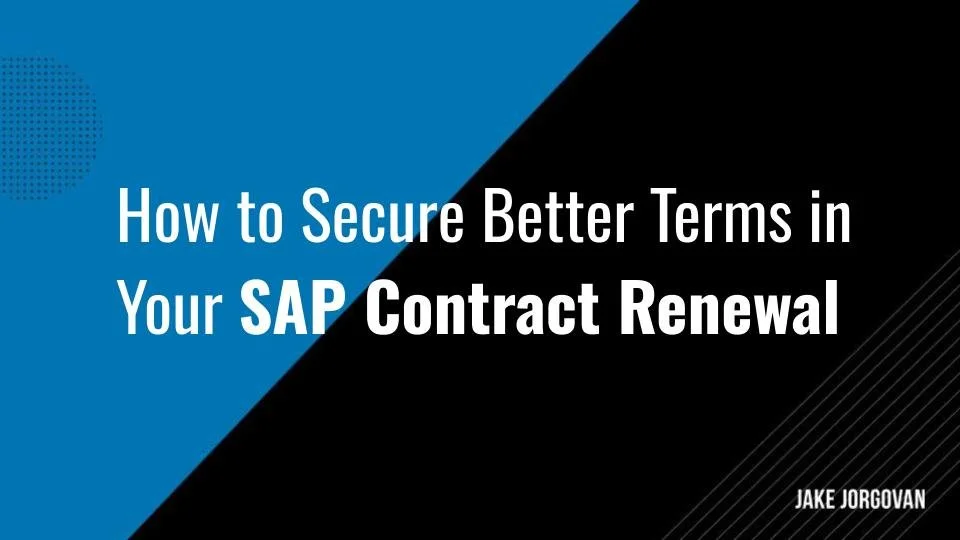Salesforce Renewal Negotiation: Best Strategies to Reduce Costs & Secure Better Contract Terms
Unlocking savings in your Salesforce renewal starts with strategic negotiation. Overpaying is common without a plan; in fact, organizations can cut software costs by an impressive 30% with the right license optimization strategy.
Negotiation isn’t just about cutting costs; it’s about optimizing value.
Analyze your usage to eliminate waste.
Understand licensing options to avoid overbuying.
Time your negotiations to leverage Salesforce's fiscal calendar.
This article will guide you through the process, helping you secure a better deal and a contract that truly meets your needs.
Keep reading to uncover actionable strategies that get the most value from your Salesforce investment.
Leverage Salesforce Usage Data
1. Assess Current Usage
A granular analysis of your Salesforce usage exposes inefficiencies that generic reviews miss. That’s important because organizations have reported a 25% increase in revenue growth after optimizing their Salesforce usage.
But any optimization starts with a good analysis.
So, focus on specific features, user activity, and license allocation. This approach uncovers underutilized resources and hidden costs. By identifying these, you can negotiate a renewal that aligns with actual needs, reducing unnecessary expenditures and optimizing your investment.
To identify underutilized Salesforce licenses and features, a precise assessment is necessary:
First, track user logins. Regularly review login data. If certain users rarely access Salesforce, consider reallocating or downgrading their licenses.
Feature utilization reports, too. The point is to determine which Salesforce features see minimal use. Tools like the Lightning Usage App provide insights into feature adoption, helping to pinpoint areas for potential savings.
Next, solicit input from various departments to understand their actual usage versus needs. This can reveal opportunities to downscale or reallocate resources effectively.
Remember to use performance metrics to assess the ROI of specific features and licenses. If the cost outweighs the benefits, it's time to renegotiate or eliminate these components.
Focusing on these areas ensures your renewal negotiations are backed by data, leading to a more tailored and cost-effective Salesforce implementation.
Pro Tip: Top Salesforce consulting companies recommend leveraging usage peaks and valleys by segmenting data by user roles and functions. Pinpoint where premium features are over-provisioned and substituted with cost-effective alternatives. This targeted approach enables you to argue for a downsized renewal tailored to your actual business usage, enhancing your negotiating leverage.
2. Use Salesforce License Management Tools
Salesforce license management tools streamline the process of tracking user engagement and feature usage. For example, companies have reported an average of 25% IT cost savings with Salesforce. These tools help you identify overprovisioning and automate the reallocation or deactivation of licenses, ensuring you pay only for what your business truly uses. This precision drives direct cost optimization in your contract renewal strategy.
Salesforce license management tools enhance your financial efficiency by automating critical tasks.
Here’s what you can use:
Automated Alerts
Set alerts for low usage thresholds across licenses. These tools automatically notify you when a license falls below a predefined utilization level, suggesting deactivation or reallocation.
Real-time Tracking
Gain instant visibility into which licenses are active but underutilized. Tools like Flexera One Select for Salesforce provide comprehensive insights across multiple Salesforce instances, helping identify redundant or unused licenses for reclamation.
Scheduled Audits
Configure these tools to perform regular audits of license usage. Automated reports detail usage patterns, helping you make informed decisions about deactivating or reallocating licenses before renewal negotiations. For example, a mid-sized e-commerce company saved approximately $50,000 annually by identifying and reclaiming 25% of its underutilized Salesforce licenses.
Policy Enforcement
Implement and enforce licensing policies automatically. For instance, if a user has not logged in for 90 days, the tool can trigger a license downgrade or reassignment to someone else, preventing waste. By integrating Zluri with Salesforce, IT teams can effectively manage licenses, understand usage patterns, and reclaim unused licenses, unlocking the platform's full potential.
Leveraging these functionalities lets you keep your Salesforce costs in check and tailored to your actual business needs.
But you also need this:
Pro Tip: Integrate your license management tools with HR systems to sync employee status changes. Automate license adjustments when roles change or employment ends. This synchronization ensures you never waste resources on inactive accounts, sharpening your fiscal precision and bolstering your stance in renewal negotiations.
3. Audit Historical Data
Auditing historical Salesforce data helps predict future requirements accurately. Review past usage trends to challenge Salesforce’s growth projections during negotiations. This ensures your renewal terms are precisely scaled to match your evolving needs without overcommitting to unnecessary capacities.
To ensure your Salesforce contract terms match actual usage, leverage historical data effectively:
Analyze Growth Trends
Examine data for the past several years to discern real growth trends. For instance, if your organization's user base has grown by an average of 5% annually, but Salesforce projects a 15% increase, you can present this discrepancy during negotiations to advocate for terms that better reflect your actual growth rate.
Pro tip: For deeper statistical analysis, Python with libraries like Pandas can model growth trends over time.
Seasonal Fluctuations
Point out seasonal or cyclical usage patterns that might not require year-round full capacity licensing. For example, if your sales activities peak during the holiday season, you might negotiate for flexible licensing terms that accommodate these fluctuations, potentially reducing costs during off-peak periods.
Past Overestimations
If previous forecasts from Salesforce were consistently higher than your actual growth, document these instances as concrete evidence. This history strengthens your case for more conservative growth projections in your new contract.
Pro tip: When presenting historical usage data, focus on cost implications of past inaccuracies. Illustrate how precise adjustments to license counts could have saved costs previously. This method shows you're not just contesting projections but are proactively managing expenses, strengthening your negotiation stance.
Future Projections
Develop your own data-driven forecasts to serve as a baseline during negotiations. By aligning your stance with these projections, you ensure that contract terms reflect your anticipated needs rather than inflated estimates. Utilizing tools like Salesforce's built-in analytics can aid in creating accurate forecasts.
By confronting Salesforce’s assumptions with your historical usage data, you negotiate from a position of informed strength, tailoring your contract to reflect true business needs.
Understand Salesforce Licensing Terms
1. Know the Licensing Options
Salesforce offers various licensing tiers, each suited to different organizational needs:
Essentials: Ideal for small teams; provides basic CRM functionalities.
Professional: Targets mid-sized businesses with deeper customization options.
Enterprise: Supports large-scale automation and integration for bigger organizations.
Unlimited: Delivers extensive support and maximum configurability for enterprises requiring the most comprehensive features and services.
To avoid unnecessary upgrades in your Salesforce renewal, carefully choose the tier that fits your actual needs:
Assess feature utilization: Before upgrading, review which features are actively used and which are not. Only move to a higher tier if the required features are not available in your current plan.
Forecast future requirements: Evaluate upcoming projects or expansions. Ensure the tier you choose supports these without over-provisioning.
Compare cost vs. benefit: Analyze the cost implications of moving to a higher tier against the actual benefits it provides. This calculation often reveals that staying on a lower, less expensive tier might be more cost-effective.
Trial advanced features: Use trial versions of advanced features when possible. This can prevent premature commitments to higher tiers based on speculative needs.
Consult with peers: Talk to peers in similar industries to understand the practical benefits and limitations of each Salesforce tier in real-world scenarios.
Getting the most appropriate Salesforce tier is how you avoid unnecessary costs and maximize your CRM investment.
Pro tip: Secure a clause for mid-contract adjustments based on feature usage. This flexibility allows you to scale your Salesforce tier up or down as necessary, ensuring you only pay for what you truly need throughout the duration of your contract, not just at the negotiation table.
2. Beware of Hidden Costs
Watch for hidden costs in your Salesforce renewal, particularly data storage fees, API call limits, and add-ons. Each can significantly increase expenses if not monitored and managed proactively. Assess these elements carefully to ensure they are justified by real business needs and not just bundled by default.
To mitigate unexpected costs in your Salesforce renewal, implement these strategic approaches:
Optimize data storage: Regularly audit your data storage to remove outdated or redundant data, reducing storage costs. Consider archiving old records to cheaper storage solutions if access frequency is low.
Review API usage: Monitor your API calls to identify patterns of high usage. If possible, adjust the timing or frequency of calls to stay within limit thresholds or batch processes to reduce calls.
Third-party integrations: Explore third-party apps that can replace expensive Salesforce add-ons. Often, these can offer similar functionality at a fraction of the cost. Ensure compatibility and security compliance before integration.
Here are some good Salesforce alternatives to consider as a quick side note.
Negotiate add-on flexibility: During renewal negotiations, discuss the possibility of customizing your package to include only the add-ons you use extensively. Push for the option to add or remove services on a monthly or quarterly basis to avoid long-term commitments to underutilized resources.
Pro tip: Evaluate the cost-effectiveness of Salesforce’s native analytics versus external BI tools. You might find that external tools offer deeper insights and more flexibility at a lower cost. Consider this switch to streamline your expenditures on analytics without compromising on the quality or depth of data analysis.
3. Negotiating Support and Add-Ons
Critically assess the value of Salesforce’s premium support tiers against your actual support usage. For many, third-party support services provide adequate assistance at a lower cost. This evaluation can reveal potential savings and align your support expenses more closely with your real requirements.
To ensure you're not overpaying for underutilized Salesforce add-ons, adopt these software negotiation strategies:
Audit usage: Regularly review how frequently each add-on is used. Present this data during negotiations to support your case for reducing or removing underused features.
Request trial periods: Before committing to long-term contracts for new add-ons, ask for trial periods to evaluate their utility thoroughly. This prevents locking in costly features that don't meet your needs.
Tiered pricing negotiation: Propose tiered pricing for add-ons based on usage levels. This arrangement allows you to pay less for lower usage and scale up if needed, aligning costs with actual value received.
Flexibility clauses: Negotiate clauses that allow you to add or drop features quarterly or annually. This flexibility helps you adapt your Salesforce solution as your business needs evolve, preventing overpayment for static services.
These tactics position you to optimize your Salesforce expenditure, ensuring you invest only in add-ons that provide tangible benefits.
But here’s one more pro tip to maximize those benefits.
Pro tip: When negotiating add-ons, push for a "pay-as-you-grow" model. This ensures you only scale add-on costs as your actual usage increases, avoiding upfront commitments. This strategy keeps your costs aligned with real-time business growth, offering flexibility and protecting your budget.
Tips for Timing Your Salesforce Negotiations
Timing is a strategic lever in your Salesforce renewal negotiations:
Fiscal year-end considerations: Salesforce’s fiscal year ends in January. Negotiate close to this time to take advantage of their eagerness to close deals, which can lead to more favorable terms for you.
Start early: Begin discussions at least six months prior to your contract’s renewal date. This early start provides ample time to assess your needs, gather data, and formulate a strong negotiation strategy.
Competitive pressure: Research and gather proposals from alternative CRM providers. Present these competitive bids during your discussions to underscore your options outside of Salesforce. This approach can significantly strengthen your bargaining position by showing you are informed and have viable alternatives.
Using these timing strategies enhances your ability to negotiate from a position of strength, potentially securing better terms and cost savings.
Pro tip: Schedule your negotiation meetings immediately after Salesforce announces quarterly earnings. Sales teams may be under increased pressure to meet targets, especially if results were below expectations, giving you an upper hand in securing concessions or discounts that might not be available at other times.
How to Build a Strategic Roadmap for Your Salesforce Contract Renewal
Developing a long-term Salesforce renewal strategy requires careful planning:
1. Align with Business Objectives
Ensure your Salesforce roadmap complements your overall business goals. This alignment helps tailor Salesforce functionalities to support your growth, rather than just expanding your tech footprint.
For example, a global manufacturing company collaborated with The Negotiator Guru to ensure their Salesforce roadmap complemented their overall business goals. This alignment led to a contract that was both right-sized and right-priced, resulting in first-year cost savings of $573,000 and cost avoidance of $952,000.
2. Forecast Upgrades and Products
Identify potential needs for new products or upgrades as your business evolves. During negotiations, secure terms that offer the flexibility to adapt these tools as your needs change, ensuring scalability.
For example, Ryder, a transportation and logistics company, utilized Salesforce to deliver leads, resulting in over $200 million in proposals. By forecasting their need for new products and upgrades, they secured terms that offered flexibility to adapt tools as their needs changed. This led to significant improvements in contract retention at the multimillion-dollar level.
3. Detailed Usage Forecast
Create a precise forecast of your future license and feature needs based on projected business growth. Negotiate your contract to reflect these projections, which helps prevent overcommitting on resources that may not be immediately.
For example, a healthcare provider managed thousands of contract renewals annually by leveraging Salesforce Service Cloud for contract management. This precise forecast of future license and feature needs based on projected business growth allowed them to negotiate contracts reflecting these projections. As such, they prevented an overcommitment of resources.
Pro tip: Prioritize contractual flexibility for scaling up or down based on performance metrics rather than fixed timelines. This approach lets you adjust your Salesforce capabilities dynamically, aligning spending with actual growth and operational shifts, ensuring you never pay for more than you need.
Master Your Salesforce Renewal for Optimal Savings and Alignment
Unlocking savings in Salesforce renewals demands strategic negotiation focused on data leverage, understanding licensing nuances, and precise timing. This guide has equipped you with the essentials to navigate these negotiations effectively.
Approach your next renewal with a detailed, data-backed strategy to align Salesforce services with your evolving business needs. This preparation ensures you don't just reduce costs but optimize the value you derive from your CRM.
If complexities arise or you seek to maximize potential savings, consider consulting with Salesforce negotiation experts. Their specialized knowledge can ensure your contract not only meets current needs but also supports future growth, delivering true value from your Salesforce investment.
Frequently Asked Questions
What are the key steps to effectively prepare for a Salesforce renewal negotiation?
Start by reviewing contractual terms to understand existing obligations. Engage negotiation experts or licensing experts to analyze terms that can be optimized. Collaborate with your internal team to define budgetary goals and identify potential cost increases. Gather insights on actual business usage, focusing on areas like service levels and administrative overhead, to guide the negotiation.
How can analyzing current Salesforce usage help in identifying cost-saving opportunities during renewal?
A deep dive into feature adoption and user behavior can reveal underutilized licenses and unnecessary add-ons. Tools for optimization expose cost-saving areas by aligning cloud usage with actual business usage. This reduces the cost of ownership while maintaining service levels. Aligning data with target customers’ needs further streamlines contract renewals.
What are the common hidden costs in Salesforce contracts, and how can they be mitigated?
Hidden costs often arise from unmonitored data storage fees, high API call rates, and unnecessary collateral creation. Mitigation involves auditing resource consumption and adopting an optimization tool to track usage efficiently. Request transparent cost breakdowns during negotiations to uncover potential financial liabilities tied to licensing models.
How does understanding Salesforce's fiscal calendar influence the timing of renewal negotiations?
Salesforce’s fiscal year-end in January often brings heightened deal-making activity. This period can create leverage for securing competitive alternatives or negotiating better terms. Timing negotiations during these windows positions you to benefit from their internal push to close deals while aligning agreements with corporate partnerships.
What strategies can be employed to negotiate better pricing and terms for Salesforce support and add-ons?
Audit your channel network to understand the real value of current support services. Propose tiered pricing for support and request advisory services for add-ons to gauge their ROI before commitment. Negotiate a pay-as-you-grow structure to scale services based on actual business growth rather than fixed terms.
How can leveraging historical data and usage trends impact the outcome of Salesforce renewal discussions?
Historical trends clarify discrepancies in Salesforce’s growth projections versus your actual metrics. Highlight patterns like seasonal shifts or service interruptions to advocate for terms that reflect real usage. Use this data to propose flexible licensing models, preventing overcommitments and aligning terms with projected demand.
What role does internal alignment among stakeholders play in achieving favorable Salesforce renewal terms?
Internal alignment ensures your strategy addresses the needs of all departments. Collaboration minimizes administrative overhead by identifying shared priorities like reducing customer churn or enhancing customer experience. A unified stance improves clarity during negotiations, supporting outcomes that meet both operational and budgetary goals.
































